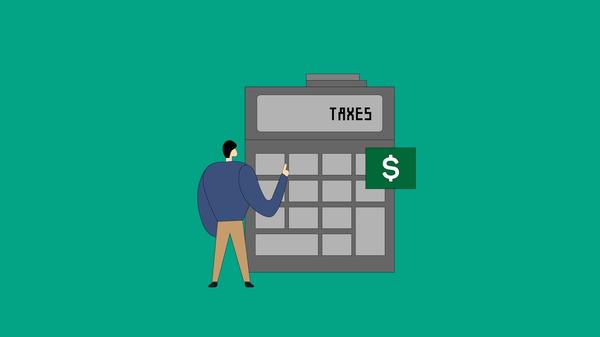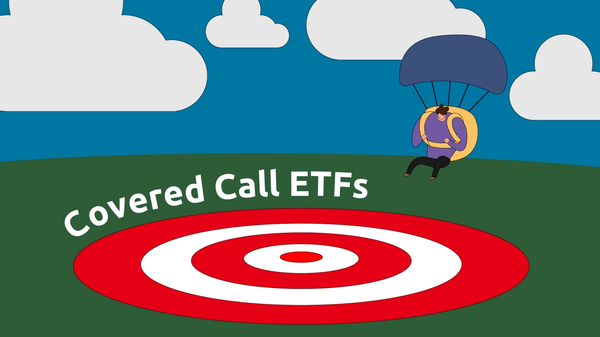We've already covered everything you need to know about TFSAs and RRSPs. Those two tax-advantaged accounts are a great place to put money for your future. But what if you want to save up for your children's future – more specifically, their education? There's an account that helps you do just that: the RESP.
What is an RESP?
The Registered Education Savings Plan is a tax-advantaged account that enables parents or guardians to save up for a child's post-secondary education.
What's the benefit of using an RESP?
The RESP offers two main benefits: tax-free growth (just like in a TFSA and RRSP) and grants from the federal government.
There are two types of government grants you can potentially use to help fill an RESP. The first is not based on parental income, so anyone can take advantage of it. It's called the Canada Education Savings Grant (CESG). Whatever amount you put in each year, this grant will match 20% up to $500 per year as a top up. There's also a lifetime per-child maximum of $7200. That's up to $7200 in free money from the government – not bad!
You'd be hard-pressed to find any other legitimate investment that gives an automatic 20% annual return. Children from middle- and low-income families could get an additional CESG, although the lifetime maximum remains $7200.
Depending on your income, you could also be eligible to receive the Canada Learning Bond. In this case, the federal government contributes to an RESP without you having to make any contributions yourself. You can check eligibility requirements here. Note that to receive the money, you have to open an RESP and apply for the bond.
A final advantage of using an RESP is that, when taken out to help finance their education, the money is taxed in the hands of your child. Since they'll be a student, they'll likely be in a low tax bracket.
When can I open an RESP?
Once your child has a social insurance number (SIN).
How do I open an RESP?
You can open them at many financial institutions, including your local bank branch. However, don't immediately go with your local bank just because you're used to it. You want to look for low fees, and you'll usually find those at online-only financial institutions.
One good option for an online RESP is through Questrade, the fastest growing online brokerage in Canada. They have low trading fees for stocks plus a long list of ETFs that you can purchase commission-free, which is especially attractive for investors who plan to hold investments long-term. You can also open an RESP at the major Canadian banks.
If you're not keen on managing your own investments, then you could start with Questwealth, Questrade's robo-advisor arm.
What's the maximum I can contribute to an RESP?
The total contribution lifetime limit is $50,000.
Note that the limit is per child and not per RESP account so, for example, if generous grandparents have opened a separate RESP account for your child, you will need to carefully coordinate contributions with them so that the total amount does not exceed the $50,000 lifetime contribution limitor else face a penalty.
Remember when we mentioned there is no annual contribution limit to the plan once you have acquired the maximum CESG match? This is where that comes into play. As long as you do not exceed the total lifetime contribution limit of the plan, you can put in as much as you like on a yearly basis - but you'll only need $2500 to get CESG.
What happens if I over-contribute?
If you pass the $50,000 contribution limit per child, you will pay a tax equal to 1% of the excess per month.
How should I space out my contributions for the highest potential return?
The maximum CESG amount is $7200, with a yearly maximum of $500. If you divide the total amount by the yearly amount, you'll find that it'll take 14.4 years to hit that maximum grant amount.
So what should you do if you're ahead of the game and plan to contribute more than the $36,000 that will get you the maximum match? If you can swing it, front-loading the RESP should give you the best returns because the money will have had more time to grow tax-free. That means contributing $16,500 in Year 1, and $2500 for 14 years after that until you hit the $50,000 limit. You can see the positive effect that frontloading can have here.
Of course, the reality is that a new human costs a lot (hello, diapers and daycare) and often means reduced household income too. While you may want to give your little Einstein the world, don't neglect your own TFSA and RRSP in the process. Your children wouldn't want you to compromise your own financial future for them and they'll be grateful for any help you can give.
Is there an age limit for RESP contributions?
You can continue contributing to an RESP up until the end of the year during which the account (not the subscriber/beneficiary) has its 31st anniversary.
However, note that you can only receive the CESG on contributions made up to the end of the year that the RESP beneficiary turns 17.
What can I put inside an RESP?
Like the RRSP and TFSA, the RESP is an investment vehicle and you can decide which assets you want to fill it with. High growth assets such as stocks, ETFs, and mutual funds are typically more volatile than low growth assets (think bonds, GICs and cash).
The asset allocation you choose will depend on your personal risk tolerance and the number of years left until your child starts their post-secondary education. We believe a passive index investing approach is an ideal way to keep your portfolio balanced and diversified while keeping fees low – aim for management expense ratios (MERs) under 1%.
What percentage of my child's RESP should be in stocks vs. bonds?
Broadly speaking, as your child gets older, you should shift more of their RESP portfolio into conservative asset classes. There are varying opinions on exact percentages and there is more than one right answer.
Dan Bortolotti from Canadian Couch Potato suggests this rule of thumb for determining the maximum percentage of stocks you should keep in your children's RESP. Simply subtract their age from 18, and multiply by 10. For example, if your child is currently 15, then 18 – 15 = 3 x 10 = 30%. He stresses that this is a maximum and that you may decide you're more comfortable going even lower. Note that this formula means that until they're 8, you could choose to have 100% of the portfolio in stocks. This is a personal choice – even with a 10-year investment horizon, you may not want to keep 100% of your child's RESP in risky investments.
Ultimately, go with the asset allocation you're comfortable with. Even if you kept 100% of the funds in GICs for 18 years, you'd still be getting the automatic 20% annual match on top (up to the $7200 max), which is a better return than any other investments can promise. Pick an asset allocation that works for you and lets you rest easy.
How do I get the CESG?
You must have an RESP, contribute to it, and have filled in the relevant application.
What is the annual limit to contribute per year to get the maximum CESG match?
$2500. The CESG matches 20% of your contribution up to a maximum of $500 per year, so if you add $2500, you'll get the maximum.
That said, there is no annual contribution limit to the plan once you have acquired the maximum CESG match. Which we touch on a little bit later.
Can I catch up on missed contributions and still get the CESG?
Yes, if you have unused contribution room from a previous year, you can contribute $5000 rather than $2500 and you can get a maximum match of $1000 rather than the usual maximum of $500.
This means you could theoretically contribute nothing to an RESP until your child turns 10, and then start contributing $5000 per year for just over 7 years and still get the full CESG match. However, you'd have lost out on the extra decade of tax-free growth, so it's always better to start early, even with seemingly small amounts.
The Government of Canada also provides an additional grant for children from lower-income families.
Do I get a tax deduction for RESP contributions?
No, contributions are not tax-deductible.
Can I open more than one RESP per child?
Yes, but be sure to carefully add up contributions across all of them to make sure you're not over-contributing – see the two answers below for more information.
I have more than one child. Should I open an individual RESP or a family RESP?
You should go with a family RESP (aka family plan) over the individual plan, because having the funds in one account makes it easier for you to manage. Plus, if one child uses less than their share of the funds, the remaining funds can go directly to your other child(ren) studies without additional paperwork to transfer the funds to a separate account.
The total contribution room goes up with each child added to the account. For example, you could contribute up to a lifetime total of $100,000 to a family RESP for two children rather than $50,000 for one child. Having the funds in one account makes it easier for you to manage.
Note: do not confuse a family RESP with a group RESP. You may also hear group RESPs referred to as scholarship funds to make them sound enticing. You should stay away from those for many reasons.
What if my teenager doesn't want to go to college or university?
RESPs can be used to fund a variety of post-secondary options (trade school, distance education, etc.), not just multi-year college and university programs. To see what's included, search for “qualifying educational program” and “specified educational program” on this government page.
They've Got 'Til Their 36
If they don't want to pursue any post-secondary study or education right after high school, you may not want to close up the account just yet. A registered education plan can stay open for 36 years, and it's possible that your child will decide they want to start school in their 20s or 30s and you can still make RESP withdrawals for the funds at that time.
Roll The Funds to a Sibling
If they have a sibling that wants to pursue post-secondary education, you can roll the RESP funds over to them, provided they have contribution room left. Note that the maximum CESG per child is still $7200, so if the combined CESG paid out to the two children is above that amount, the excess will be returned to the federal government.
Close The Account
Finally, if none of the above fits your situation, you can close the RESP. The grants go back to the government but the amount that you contributed is returned to you tax-free because you contributed with after-tax dollars. However, you pay tax on the interest earned, at your regular income tax level plus an additional 20%.
If you and/or your spouse have available RRSP room, you can transfer the funds there, which will decrease your tax burden.
I'm ready to make my RESP Withdrawals, how do I do that?
Understanding the withdrawal process is key to utilizing this savings tool effectively. Here's a general guide on how to make RESP withdrawals:
- Check Enrollment in a Qualifying Educational Program: Before making withdrawals, ensure that the student (beneficiary) is enrolled in a qualifying post-secondary educational program at a recognized educational institution.
- Gather Required Documentation: You'll need to provide proof of enrollment to the financial institution managing the RESP.
- Determine the Type of Withdrawal: RESP withdrawals can be of two types: Post-Secondary Education Payments (PSEPs) for the beneficiary and Educational Assistance Payments (EAPs) that include the government grants and investment earnings. Contributions made by the subscriber can be withdrawn tax-free, while EAPs are taxable in the hands of the student.
- Contact Your RESP Provider: Inform your financial institution of your intention to make a withdrawal and discuss the types of withdrawals available based on your needs and the account balance.
- Complete the Necessary Forms: Your RESP provider will require you to fill out specific forms to process the withdrawal. Ensure all information is accurate and complete to avoid delays.
- Submit Your Request: Along with the completed forms, submit the required proof of enrollment and any other documents requested by your RESP provider.
- Tax Implications: Be aware of the tax implications for the subscriber/beneficiary. While the contributions are not taxable upon withdrawal, the EAPs are considered taxable income for the student in the year they are received. When your child withdraws the money to pay education expenses, they will only be taxed on the investment growth and grant portions of the plan. However, since many students have lower incomes, the tax burden is often minimal.
- Plan Your Withdrawals: Consider spreading out your withdrawals over the duration of the student's program to manage tax implications and ensure funds are available when needed.
For personalized advice and the most current information, contacting your RESP provider directly or consulting with a financial advisor would be beneficial, as they can provide guidance tailored to your specific situation.
-----
That's all from us – we hope this has helped you get started with saving for your children's education! If we didn't answer your question here, take a look at the Government of Canada's RESP webpage.


